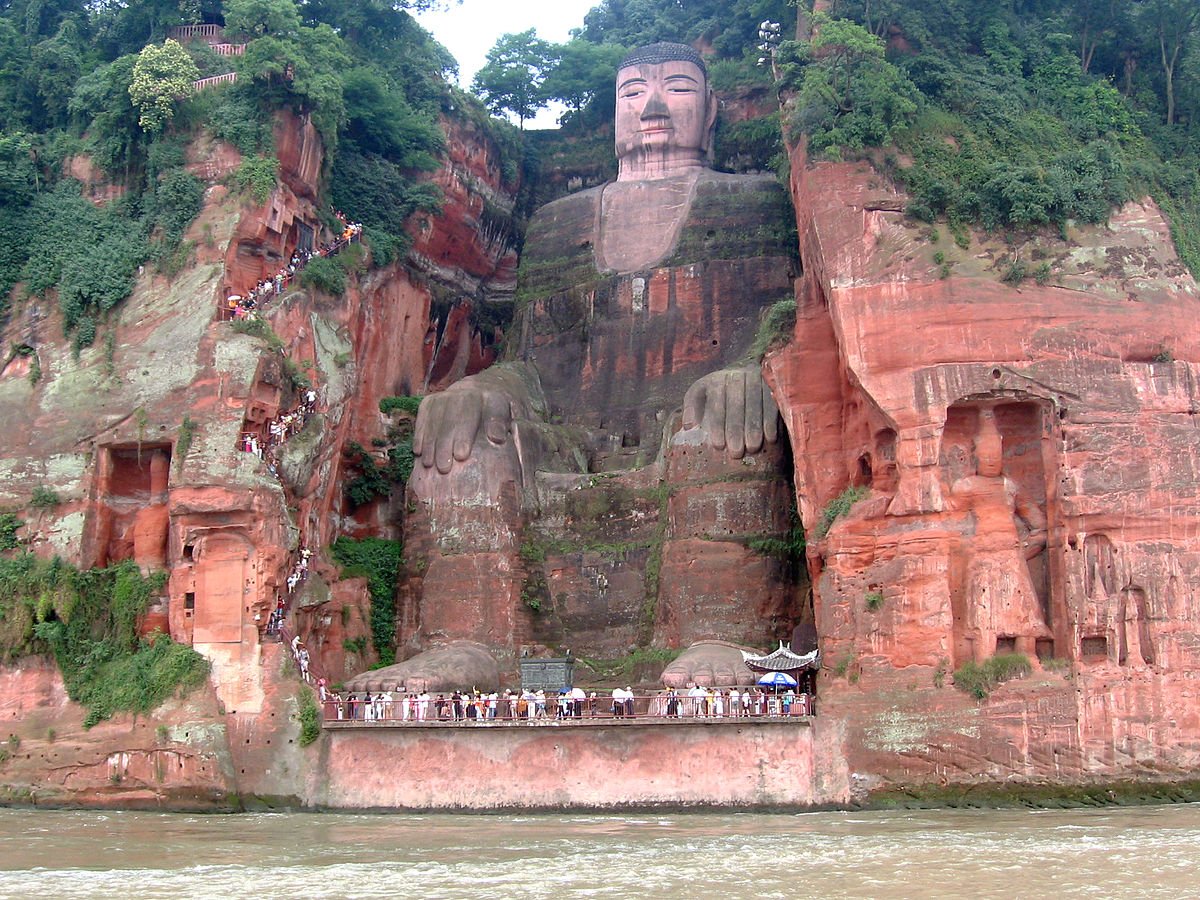Many centuries ago, people had no engineering degree. No university where they can study engineering, or anything similar. Yet, they had some of the greatest engineering achievements in history. One such example is the Great Buddha of Leshan, standing over 230 feet tall, and carved from a single stone in the early 9th century.
Leshan Buddha is the tallest statue of Buddha to be found in the world. It was carved from the sandstone of a cliff overlooking the junction of the Min and Dadu Rivers in Sichuan.
It includes over 1,000 coiled hair buns of stone, all of which are placed on the statue’s head. Designed to collect rainwater and route it to a system of drains and drainpipes, they allow the water to flow through the head and arms. Here are some facts about the statue of Buddha.
Largest stone carving in the world
Leshan Buddha is the biggest carved stone Buddha in the world. It has been featured in poetry, songs, and stories. Initiated by a monk called Hai Tong, the project started to help people who earned their living around the confluence of the three rivers.
![]()
Hai Tong was concerned their activities put them at great risk. The project was only half done when he passed away, but it was continued by two of his ardent disciples. The current of the rivers were altered and the safety of the people was secured.
The Engineering achievement took 90 years to complete
As we said before, back in the early 9th century, there were no engineers and engineering schools. Sculptors mastered their craft with experience. The carving of the Leshan Buddha began in 713, during the reign of the Tang Dynasty. It was completed 90 years later, in 803.
More than 3,000 sculptors worked on the statue made from a single stone for 90 years. It remains the biggest carved stone Buddha in the world.
The statute can show emotions
You can see the giant statue of Buddha looking sad and happy during different moments. How does he do it? By closing his eyes when sad or showing happiness.
Many experts believe this has happened because of bad weather and air pollution. People believed the Leshan Buddha cried in 1962, 63, and 76. He was happy in 1994, 2001, and 2002.
![]()
And if you like to take things further, in 1962, there was a natural disaster that lasted for two years. It might be the reason why the Giant Buddha closed his eyes, as he could not bear watching the people suffer.
The Halo
Another natural phenomenon is when a halo appears on the Giant Buddha. It is formed by the diffraction and diffused reflection of sunlight on the surface of water droplets in the clouds.
Depicting a famous Buddha
The project began in the 8th century during the reign of the Tang Dynasty. At the time, Buddhist culture was at its peak in ancient China. The statue depicts Maitreya, a popular Buddha during that period.
When Maitreya comes into the world, he brings peace with him. Many believe that the Giant Buddha is the source of light and happiness.
Appealing to the Gods
Some historians believe that statue was carved to appease the gods. Hai Tong was concerned about the safety of his people, as they would travel on the river using boats.
Buddhism was an important religion at the time, and it still is. And back in the day, people thought they need to appeal to the gods for prosperity.
It took Hai Tong 20 years to raise funds for the project.
Tourism and Giant Buddha
The Leshan Buddha is one of the six world cultural heritage sites in the Province of Sichuan. As such, it receives quite a lot of tourists. From 2001 to 2003, it was ranked as the second most popular attraction in the province. During the 2000s, between 2 and 3 million people visited the site per year.
![]()
People come from all over the world to worship the Buddha it represents. There is a pedestrian pathway allowing visitors to appreciate the changing view of Buddha’s body through multiple perspectives.
He has been damaged
At the beginning of the Northern Song Dynasty, the Leshsan Giant Buddha had been damaged. The wooden pavilion had even collapsed. Then, it was repaired during the reign of Song Renzong.
How big is it?
The remarkable historic site was listed as a UNESCO World Heritage Site in 1996. It is 233 feet tall, making it the tallest Buddha in the world. His head alone is 14.7m in height and 10m in width, and there are more than 1,000 buns in Buddha’s colored hair.
![]()
You can view it on a boat
To get the best view of the massive Buddha, we recommend taking a boat. It saves you time and energy from climbing the wooden planks.
The boat is shared by a group of tourists, and it cruises in front of the river with frequent stops. You can take in the panoramic views of the Buddha and then return to the pier.



